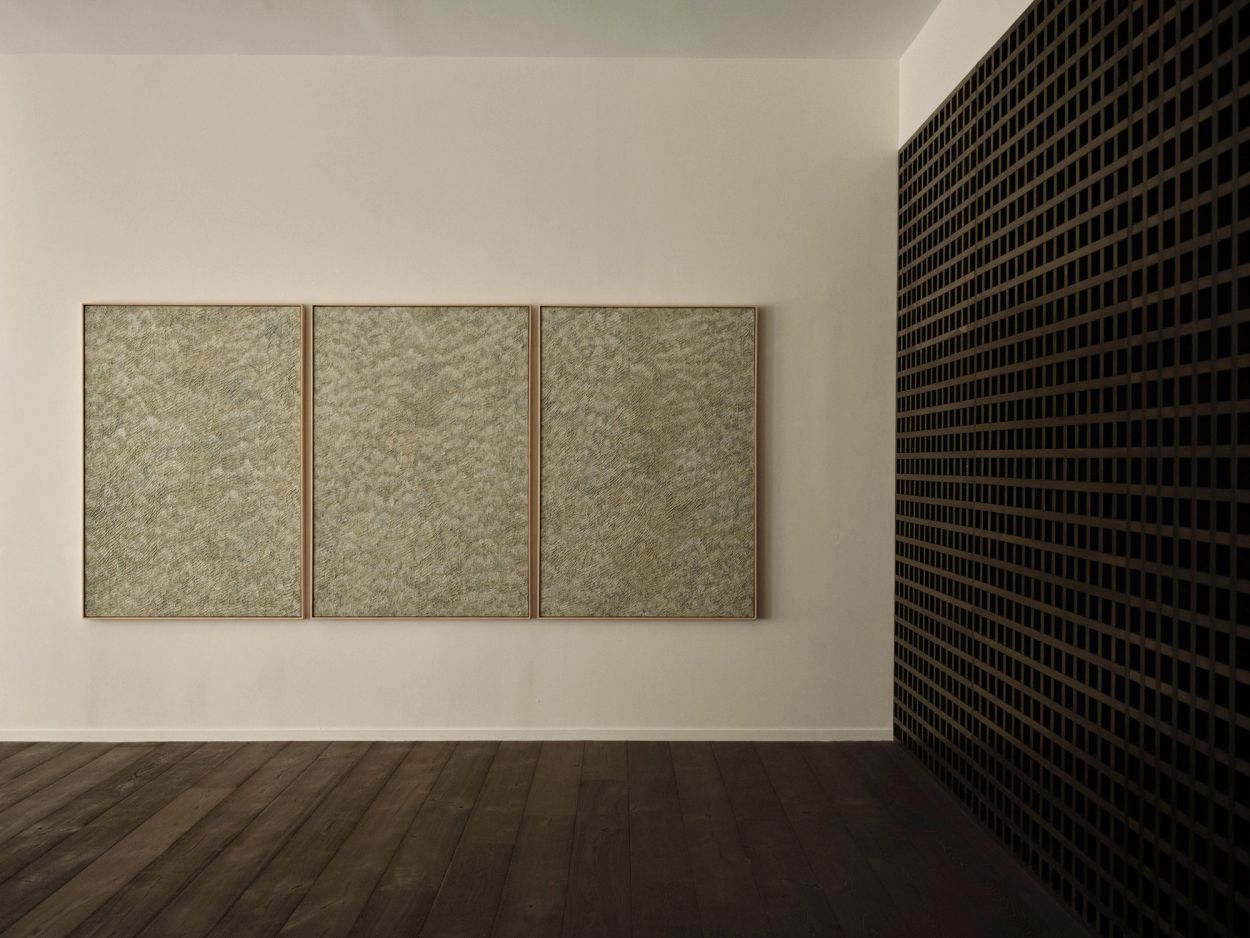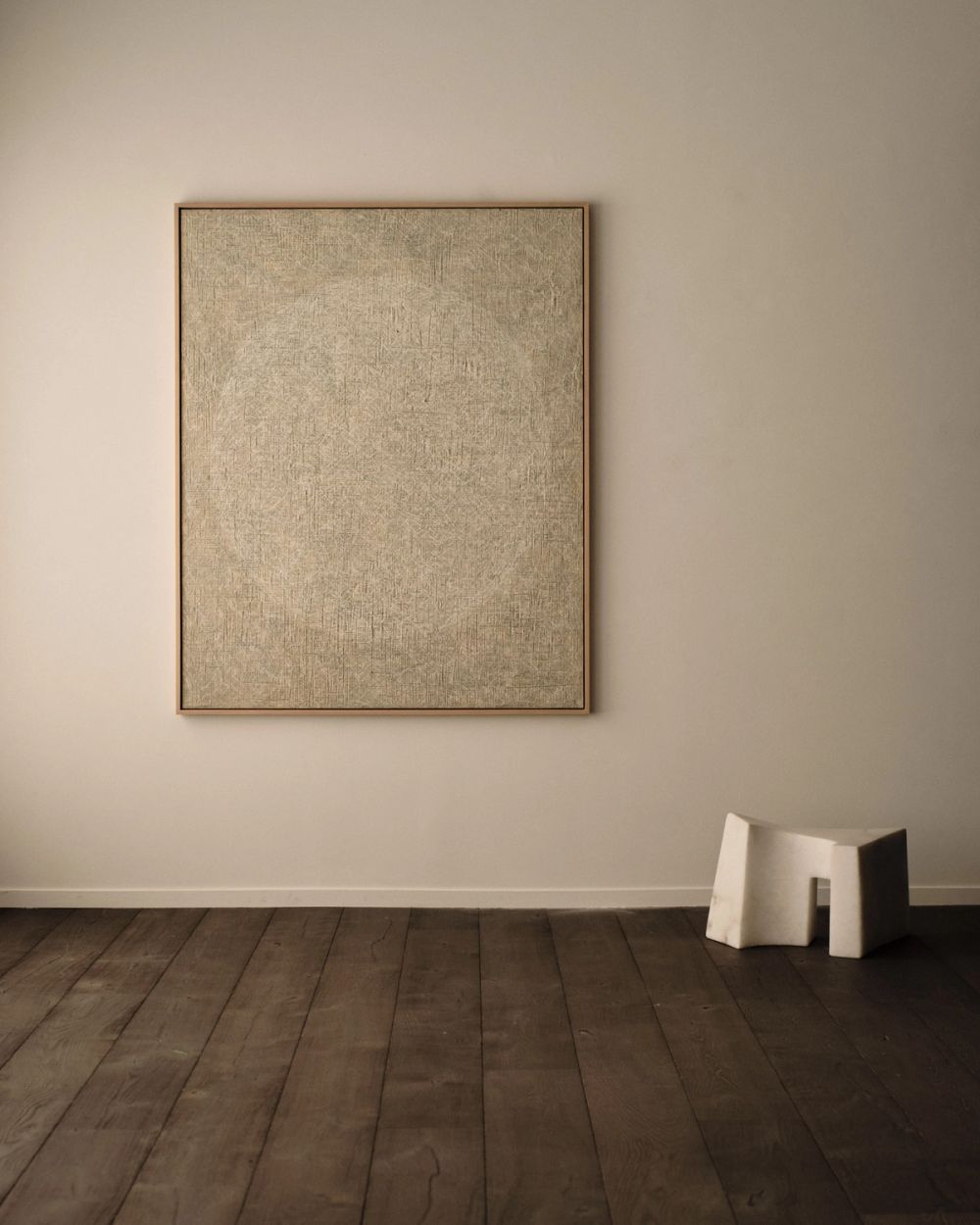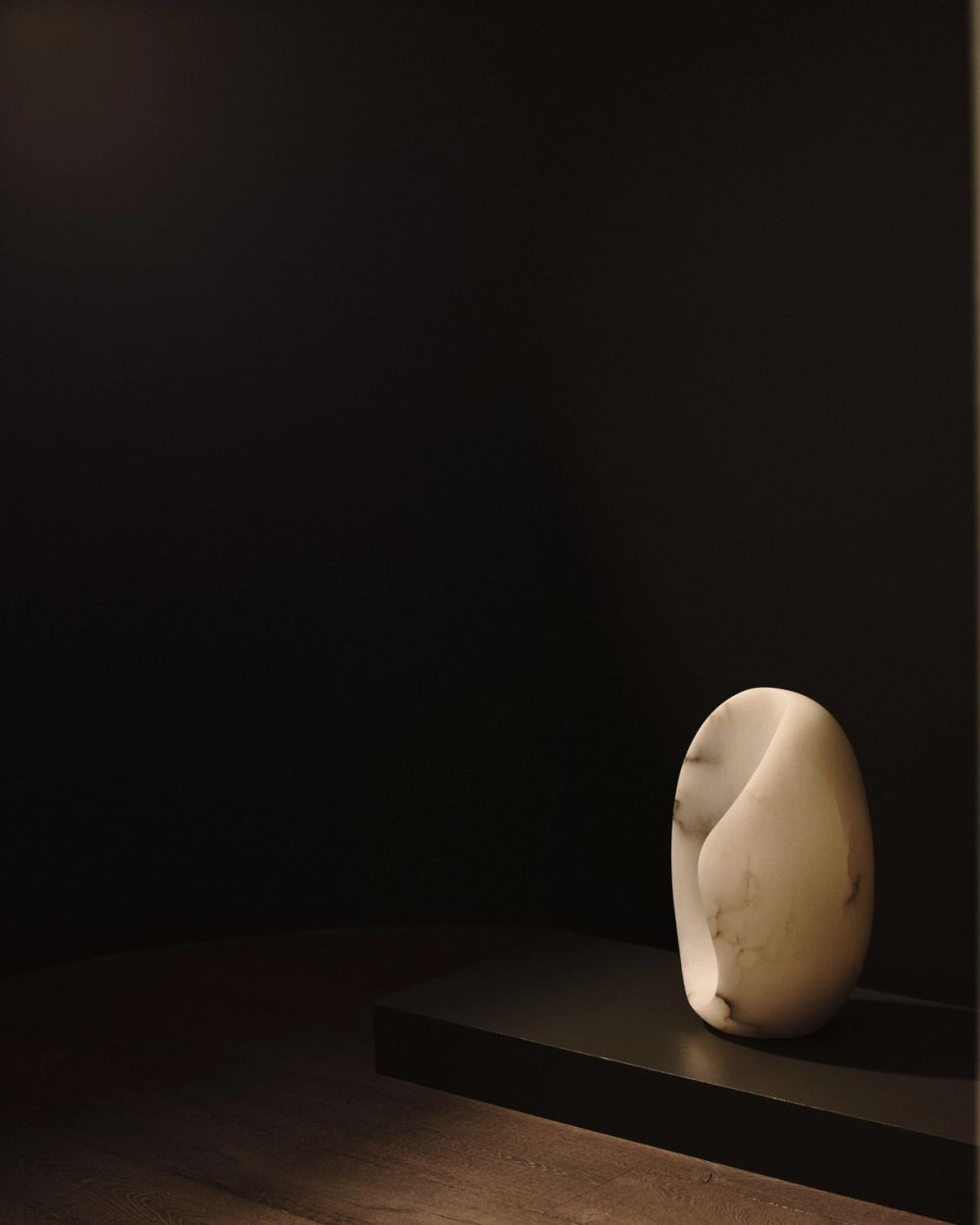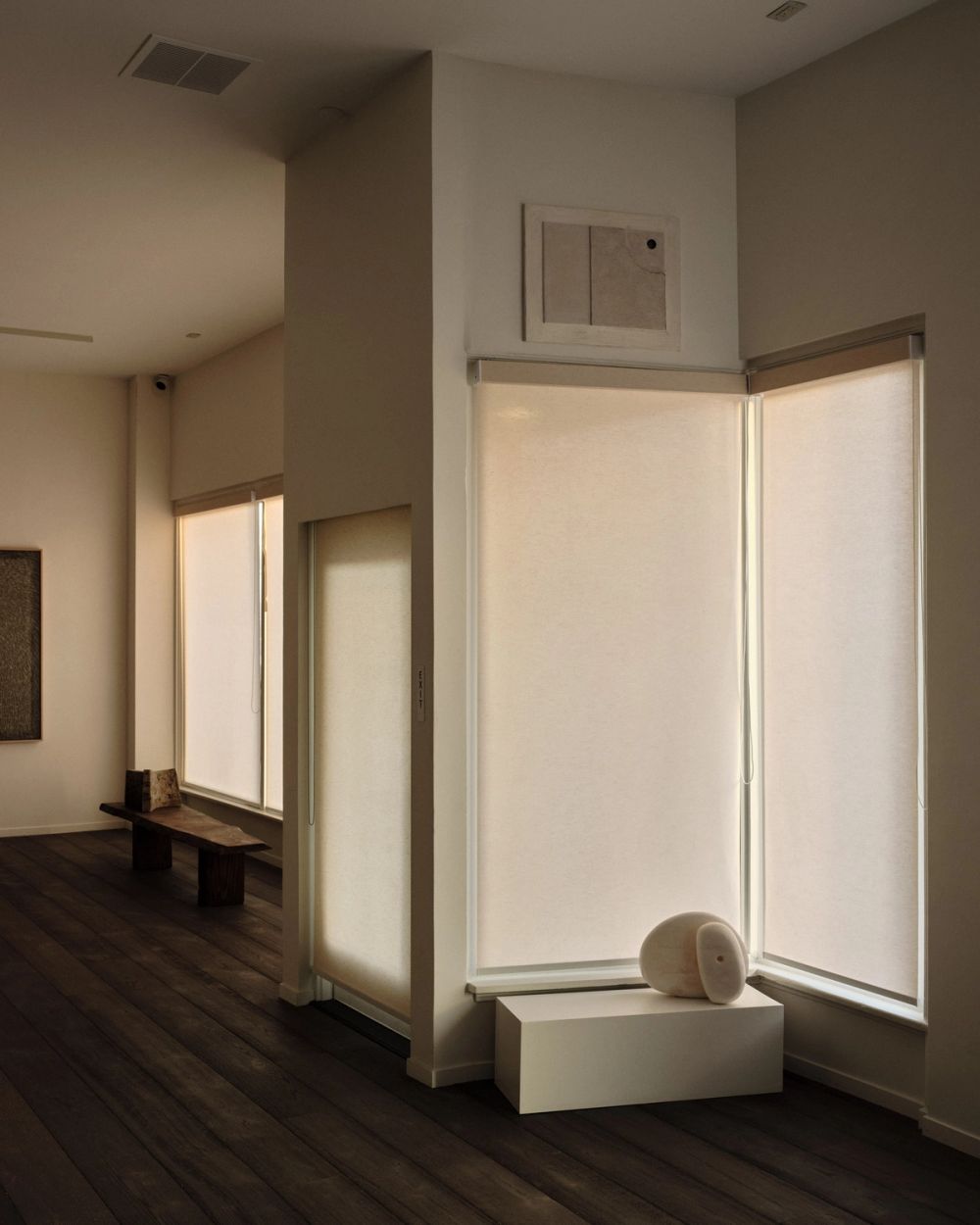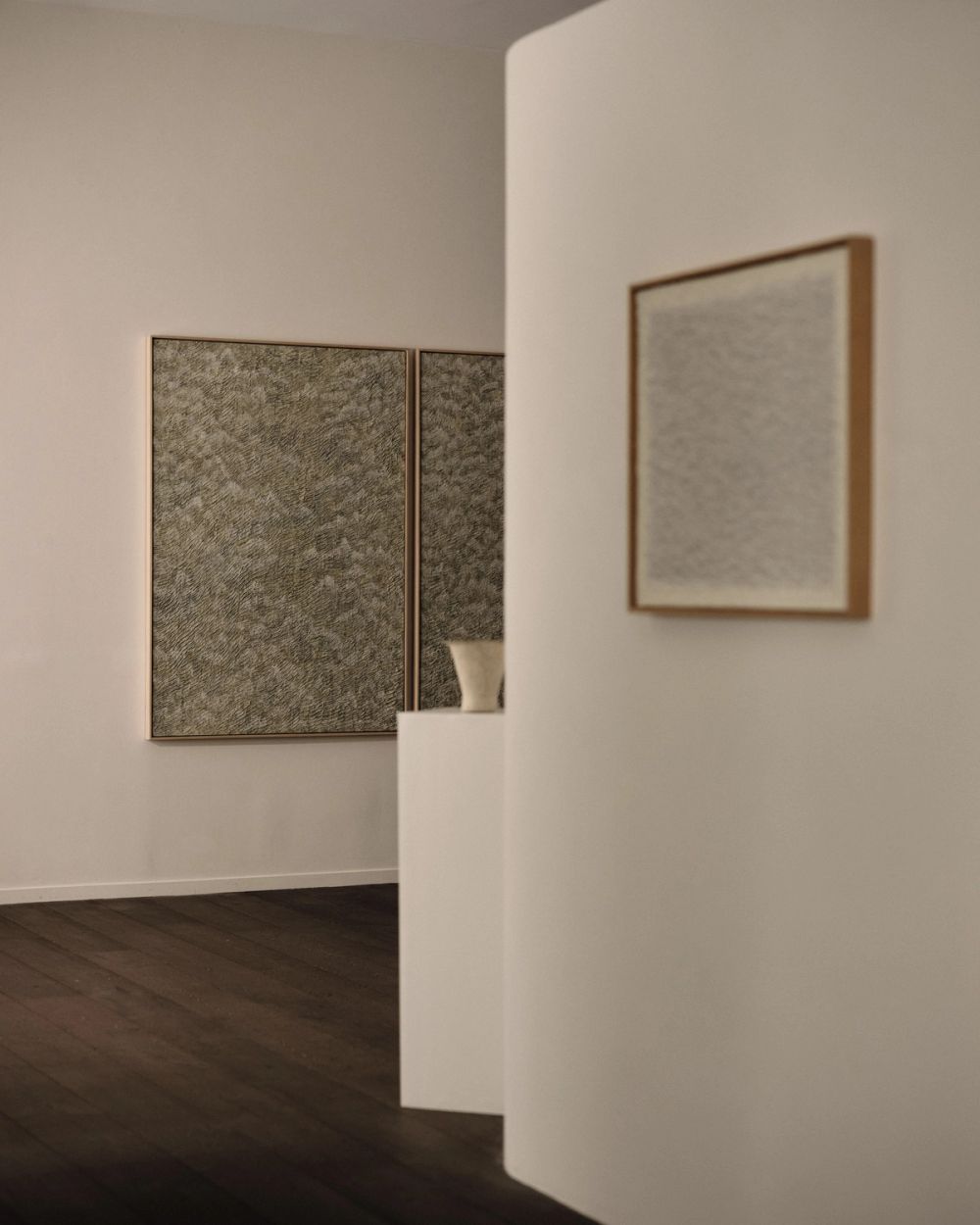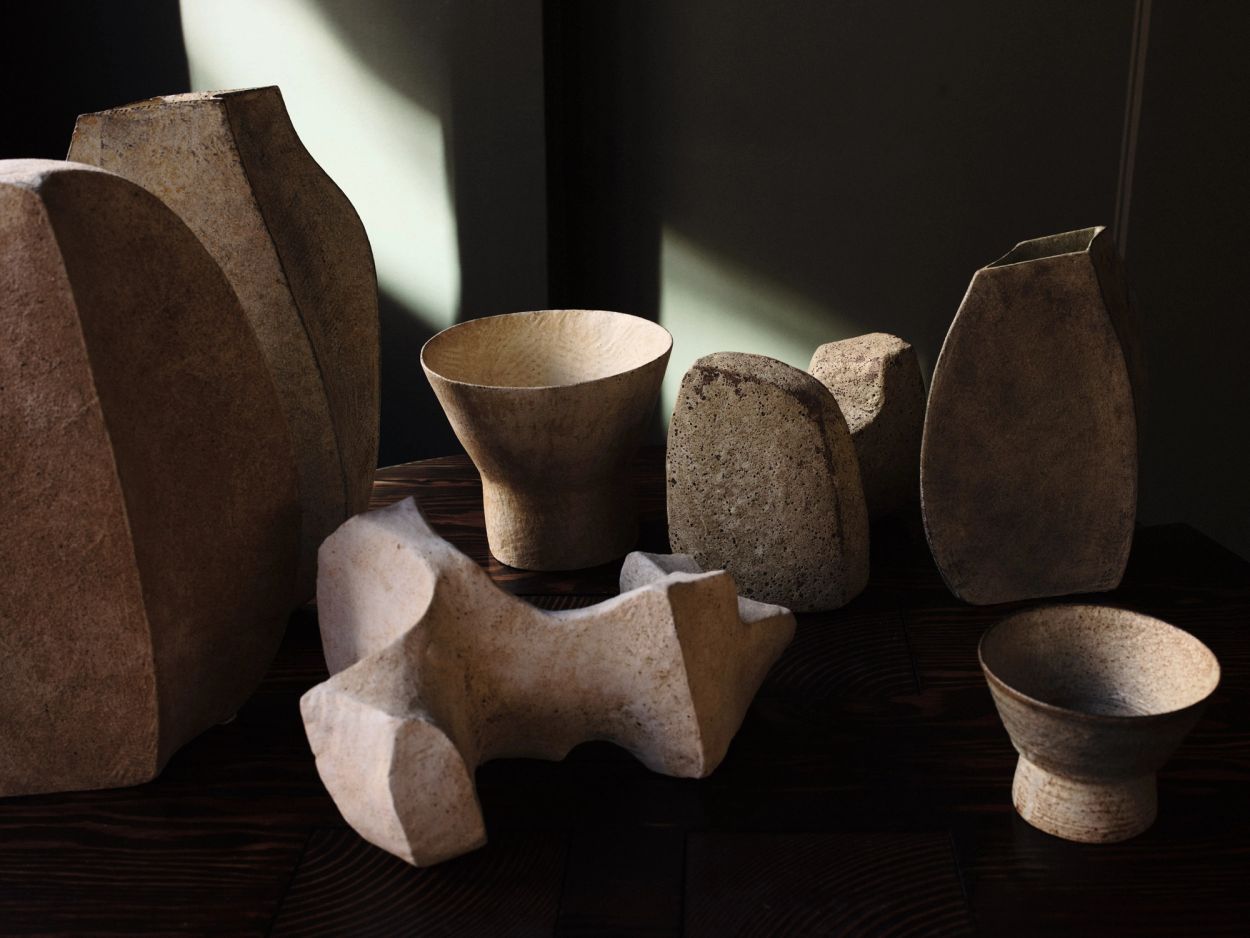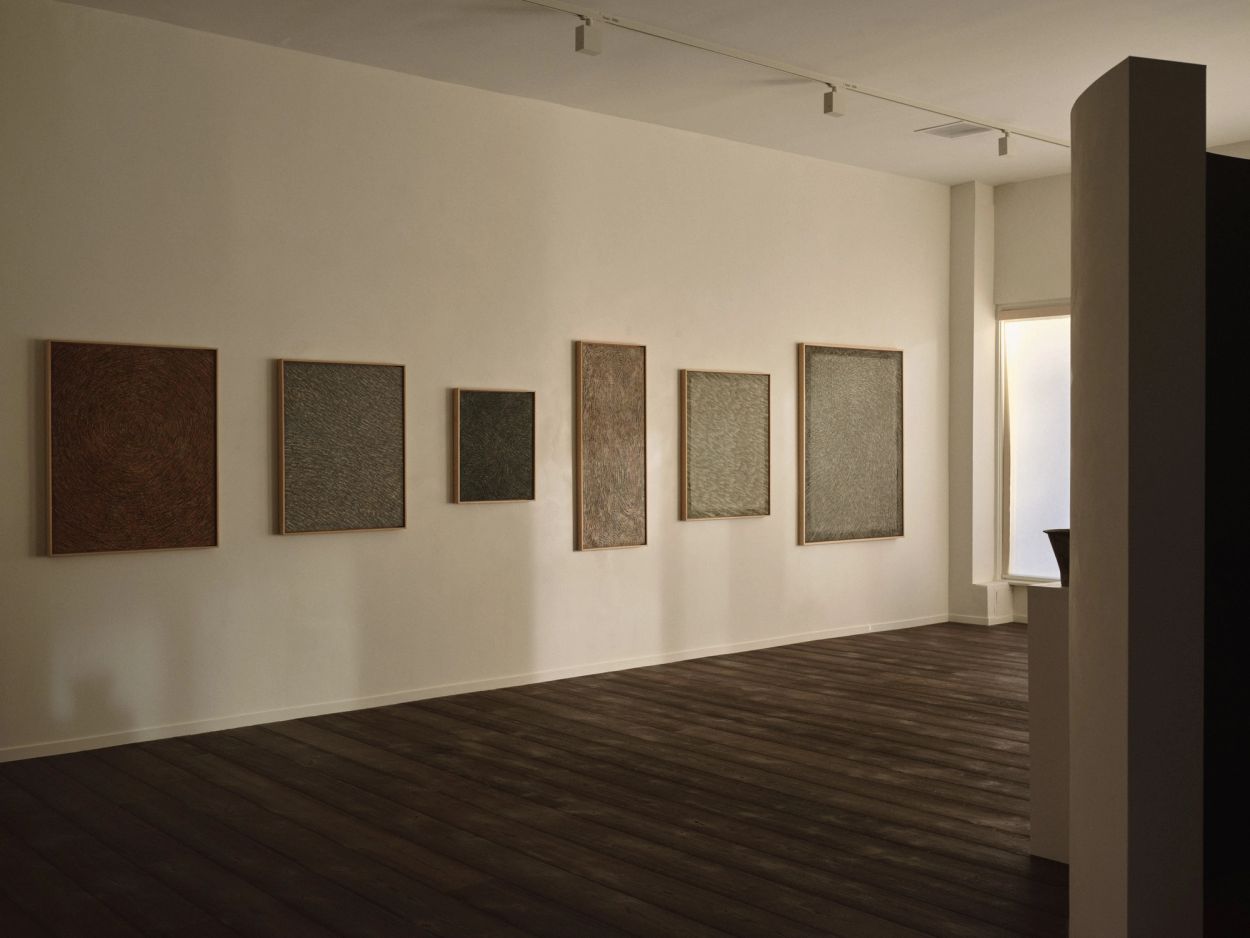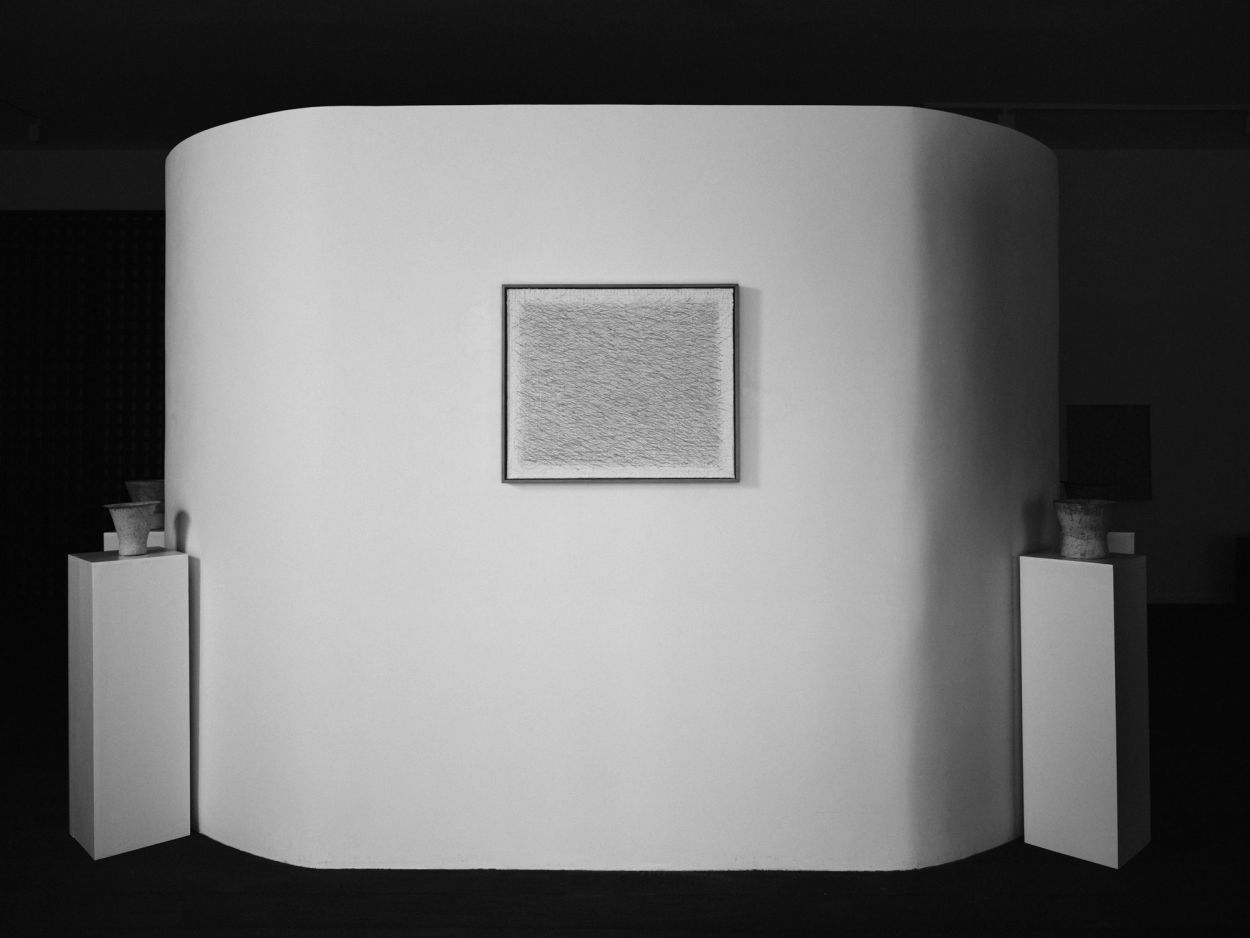Paul Philp & Woo Byoung Yun: The Sun Stands StillDec 15, 2023 – Feb 10, 2024
Time is captured within all works of art, it is an inherent and irrevocable ingredient. However, for the artist, it is the unseen time that is perhaps most essential – the time between layers, where one sits back, allowing one coat to dry or to set, before continuing on.
This is particularly true of the work of Paul Philp and Woo Byoung Yun, whose work has time - and particularly empty time - baked into it. Working in ceramic and plaster respectively, the artist’s materials impose periods of rest and inaction upon the maker.
Woo Byoung Yun’s canvases accrue layers in much the same way as a sedimentary rock formation, a product of both matter and time. Mixing gypsum with water, he applies a first coat – thin and flat – to his canvas, leaving it to dry for a day or so. A second, thicker layer is applied, into which the artist carves, scrapes and scratches his chosen design. The thick frosting of plaster transforms the canvas from two-dimensions to three, blurring the boundary between painting and sculpture.
Painted in earthy tones – the red-orange of terracotta, the deep green of moss, and the many muted blue-greys of the ocean under a cloudy sky – from a distance Woo’s paintings could be described as monochrome, however, when observed up-close their surfaces reveal an abundance of colour. Mottled and flecked, the painted plaster sometimes mimics thick impasto brushstrokes, whilst others have a much thinner quality, more akin to handmade paper – an ancient Egyptian papyrus or Korean Hanji.
Paul Philp’s use of texture and colour is equally evocative. Layers of different materials and processes pile up, one atop the other. A single piece might be fired four or five times, with the artist making adjustments – rubbing, painting, dipping – in the intervals between. As a result of his lengthy and intricate technique, Philp’s objects seem to have been created by time rather than design, and he creates shapes and silhouettes that evade easy categorisation by style or era.
A series of simple vessels – conical forms in sandy yellows – feel distinctly time-worn; a haze of white appears, thin and patchy, across their surfaces, which are scratched and dimpled. The black glaze of a low-walled, square pot has been elegantly aged, brought to life in a symphony of browns, greys and yellows. Observing the work of the two artists together, it becomes possible to imagine that, if magnified many times over, Philp’s fired clay might closely resemble the intricate textures of Woo Byoung Yun.
An expression of the unseen elements and forces that shape our world, Woo’s paintings seem to capture the feeling of energy itself. If Woo wishes to hold the world still through his work, then Philp wishes to speed it up, accelerating his objects through time to explore ideas of age and erosion.
There is a quietude to the work of both Paul Philp and Woo Byoung Yun - a deep sense of focus. Perhaps the mind stills and thoughts clarify in the time between the layers, when the plaster is setting and the kiln is on.
Words
- Rosanna Robertson
Photos
- Rich Stapleton
Featured Works
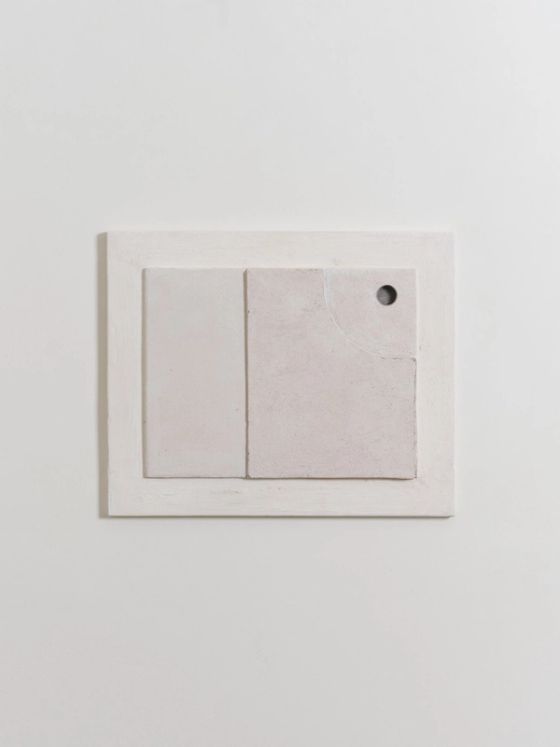
 LA Gallery
LA GalleryPaul PhilpUntitled 47, 2023


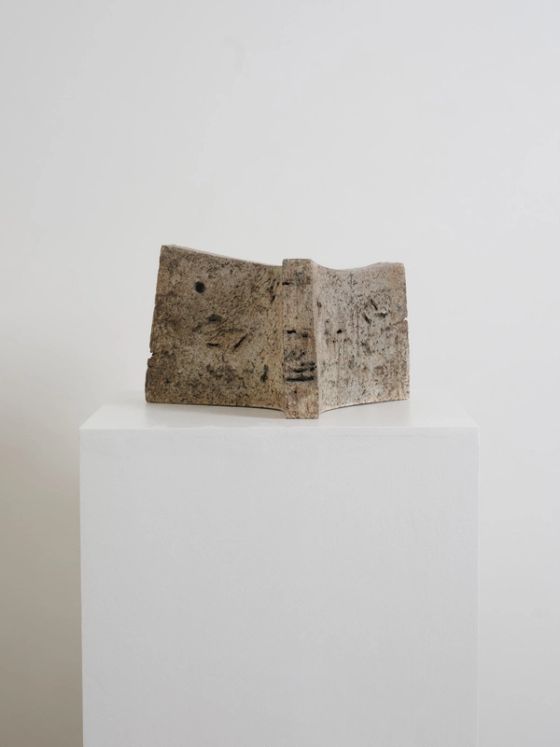
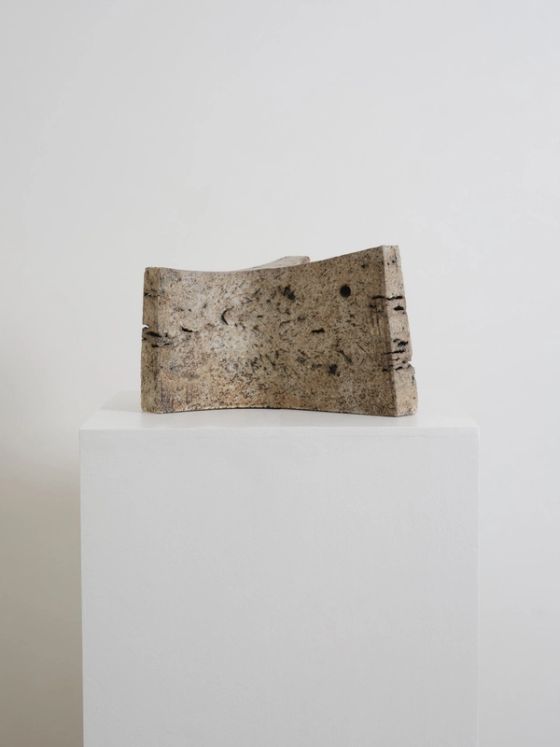 LA Gallery
LA GalleryPaul PhilpUntitled 33, 2023
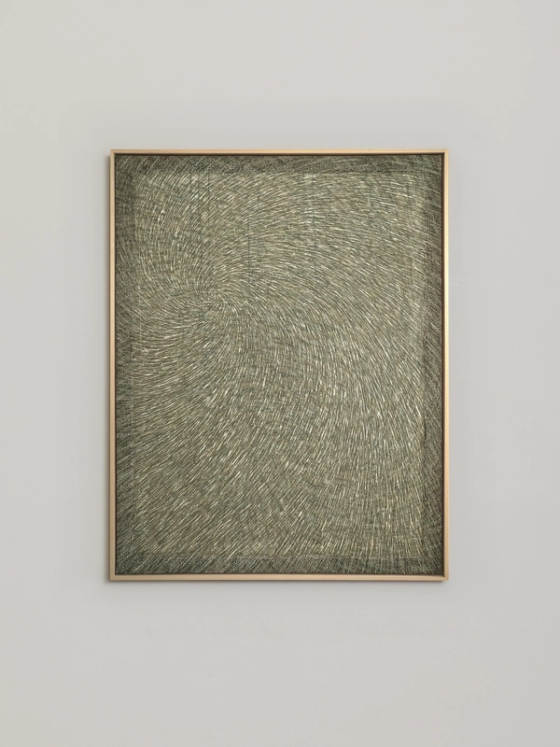
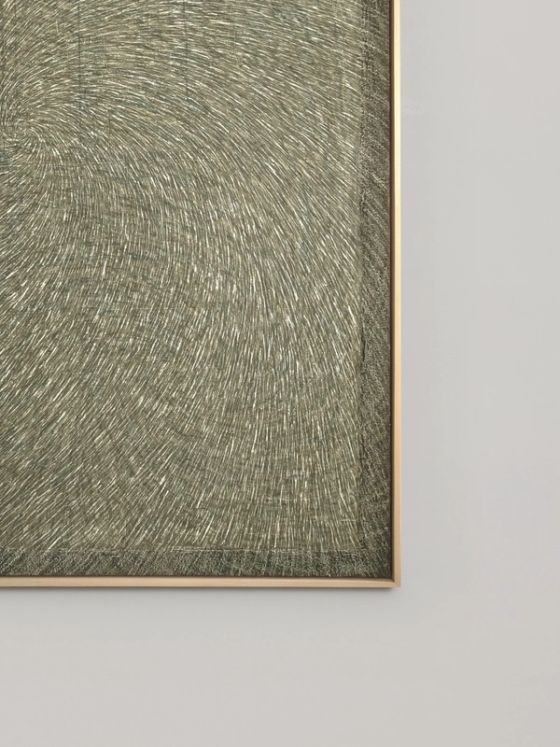
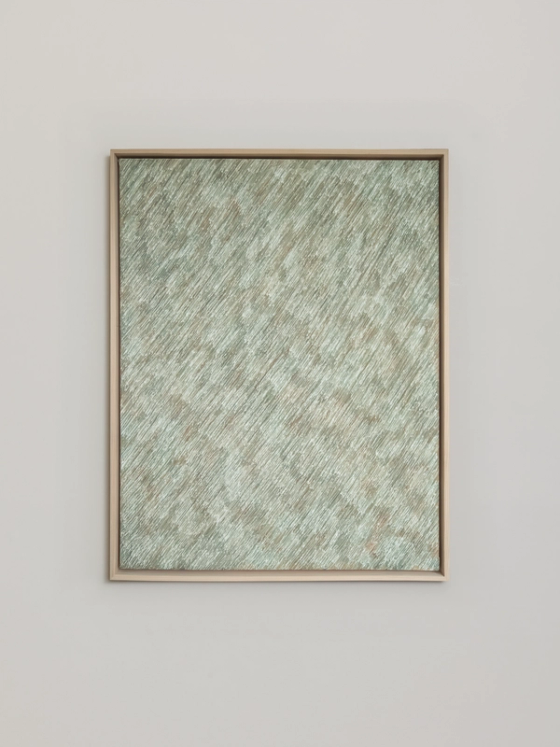
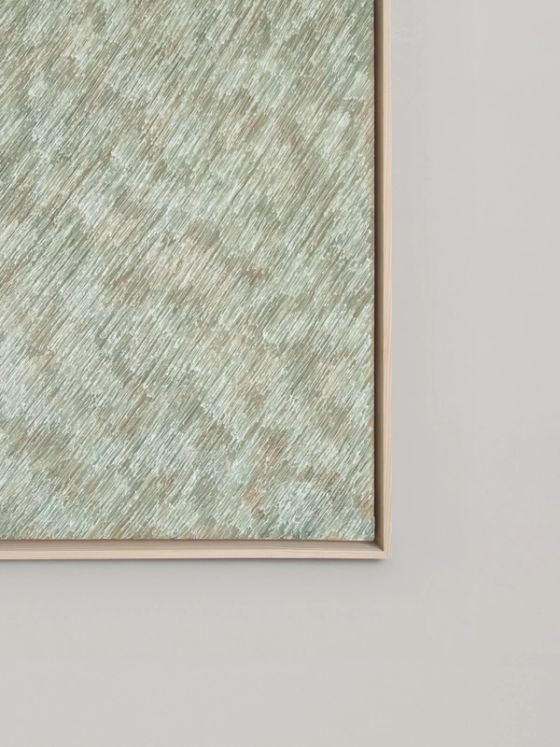
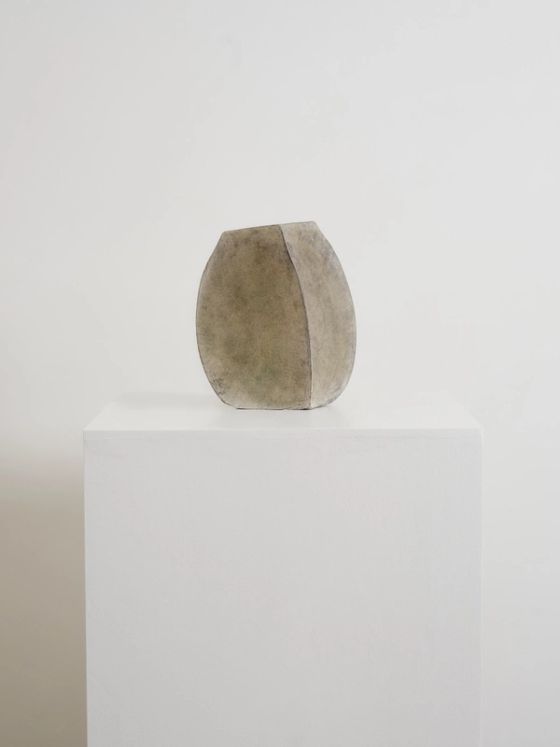
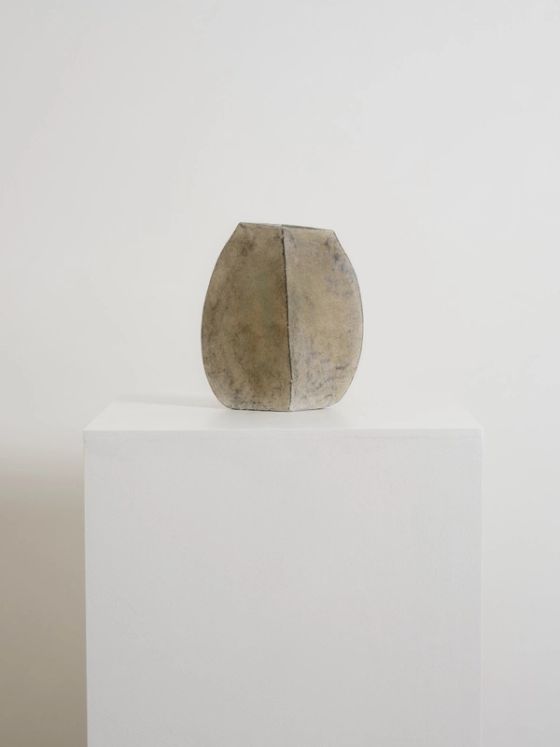 LA Gallery
LA GalleryPaul PhilpUntitled 44, 2023

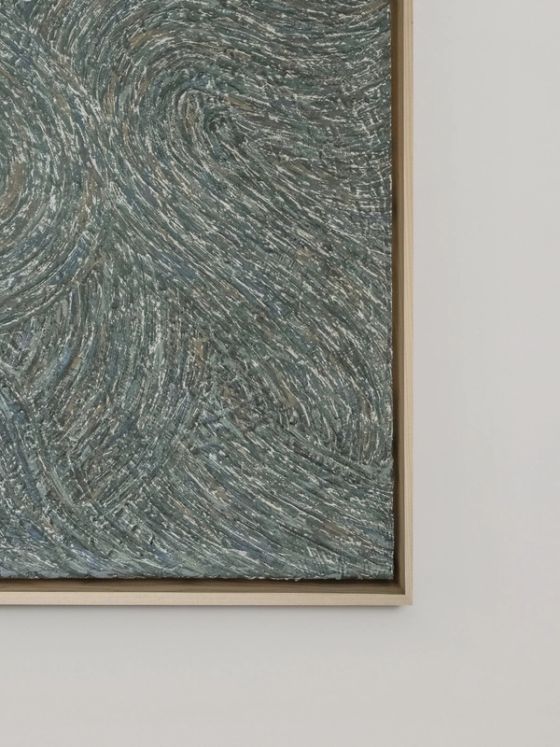

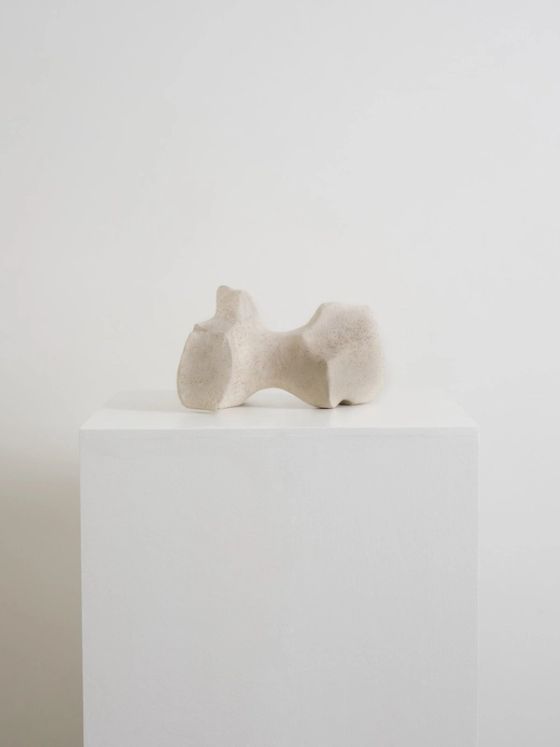 LA Gallery
LA GalleryPaul PhilpUntitled 38, 2023
Featured Artists
- Paul Philp
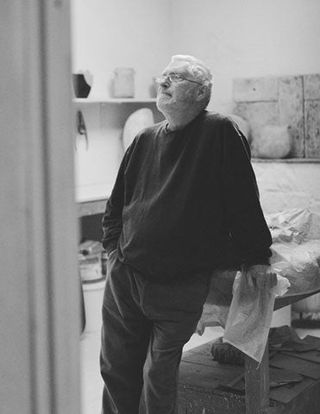
Paul Philp is a studio potter who has been making ceramics for over 50 years. Building everything by hand, he is free to create the forms his imagination requires, beyond the restraints of a potter’s wheel.
- Woo Byoung Yun
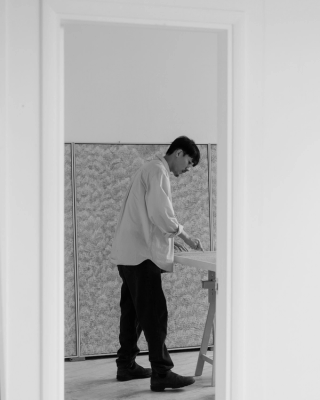
Combining science, philosophy and art – as they often were in the past – Woo has a particular interest in the mechanics of light. He draws upon the discoveries of his own time, in particular, quantum mechanics and the recent revelation that light is both a particle and a wave.
Related exhibitions
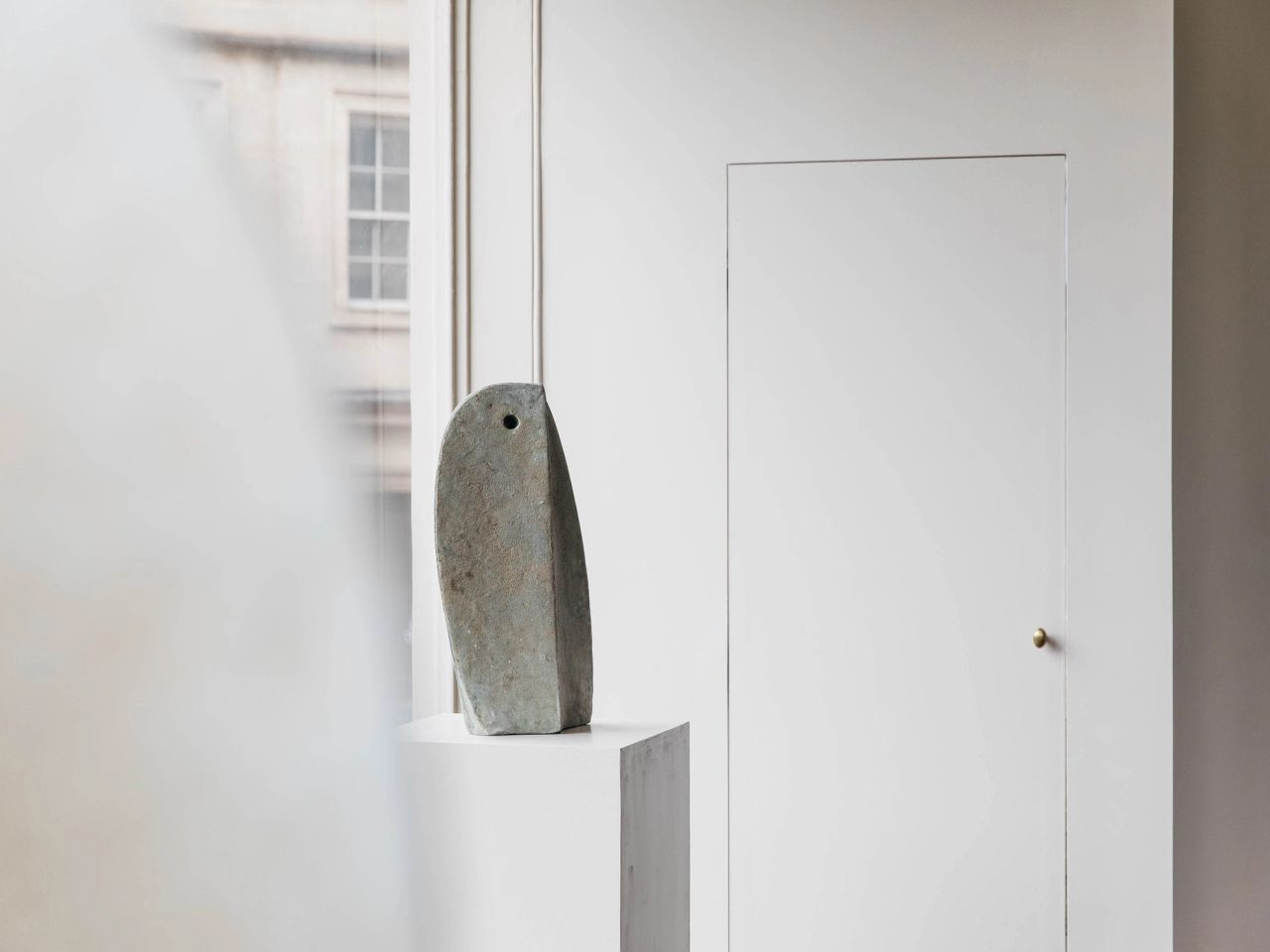 Bath Gallery
Bath GalleryPaul Philp: UnearthedJan 31 – Apr 4, 2020
Unearthed is a solo exhibition by studio potter Paul Philp, featuring ceramics, relief works, and an alabaster sculpture, built by hand over the last 10 years in his home studio in Bath, United Kingdom. His work is informed by a fascination with ruins, antiquities, Asian art, and geology. “I’ve always had an enquiring mind about these subjects,” he says. “I have developed a vast collection of Asian and Tribal art catalogues over the years, as well as various antiquities, including an ancient Egyptian vase, a Buddhist terracotta sculpture, and hundreds of prehistoric stone artefacts, such as Native American arrow heads.”



